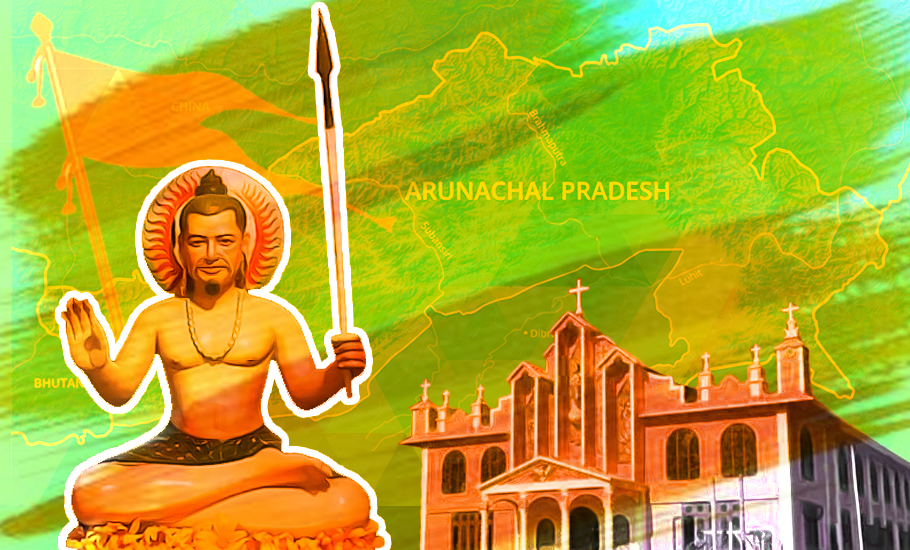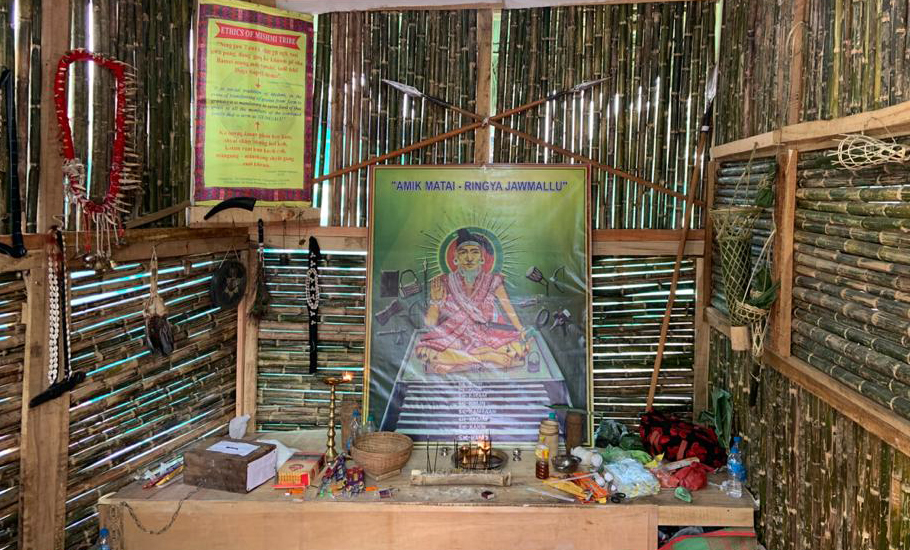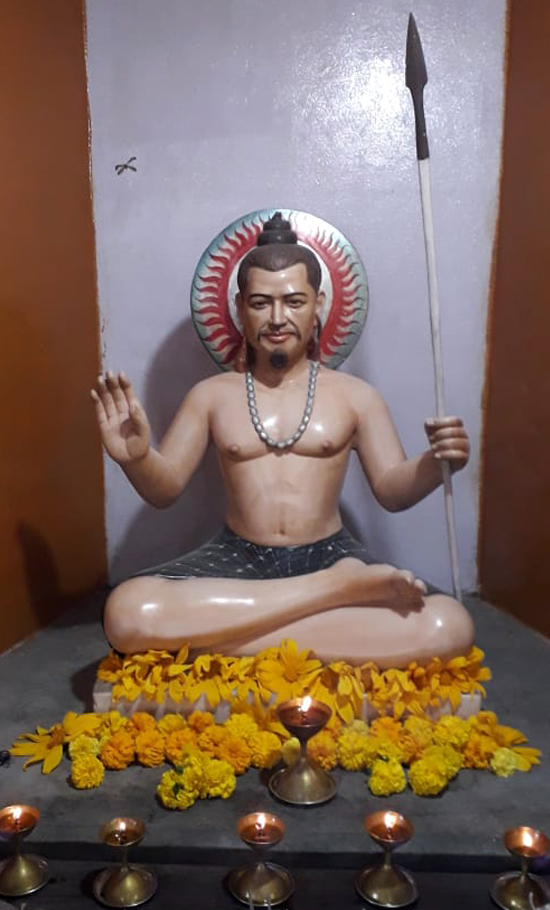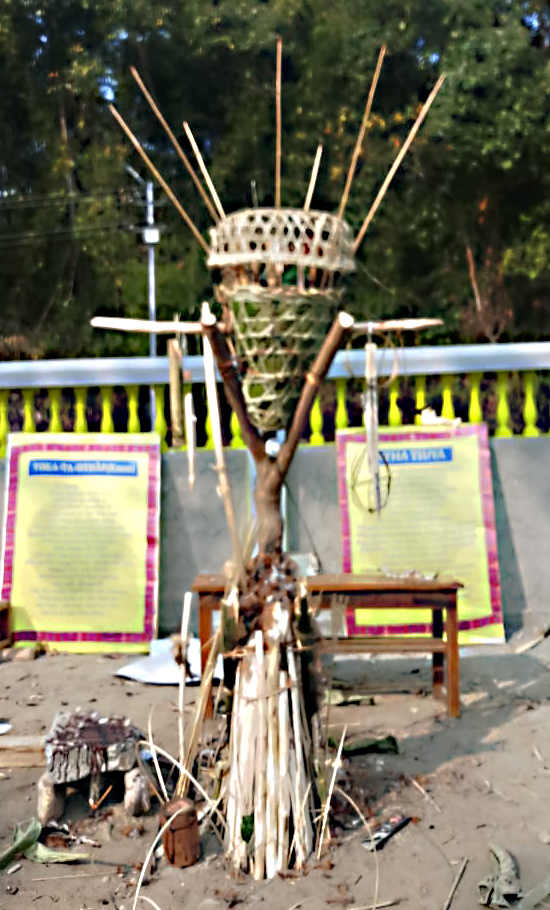
- Home
- News
- Analysis
- States
- Perspective
- Videos
- Education
- Entertainment
- Elections
- World Cup 2023
- Features
- Health
- Budget 2024-25
- Business
- Series
- NEET TANGLE
- Economy Series
- Earth Day
- Kashmir’s Frozen Turbulence
- India@75
- The legend of Ramjanmabhoomi
- Liberalisation@30
- How to tame a dragon
- Celebrating biodiversity
- Farm Matters
- 50 days of solitude
- Bringing Migrants Home
- Budget 2020
- Jharkhand Votes
- The Federal Investigates
- The Federal Impact
- Vanishing Sand
- Gandhi @ 150
- Andhra Today
- Field report
- Operation Gulmarg
- Pandemic @1 Mn in India
- The Federal Year-End
- The Zero Year
- Premium
- Science
- Brand studio
- Home
- NewsNews
- Analysis
- StatesStates
- PerspectivePerspective
- VideosVideos
- Entertainment
- ElectionsElections
- Sports
- Loading...
Sports - Features
- Budget 2024-25
- BusinessBusiness
- Premium
- Loading...
Premium

The divine truth behind 'Hinduisation' of tribes in Arunachal
Look-alikes of Hindu deities have burgeoned across Arunachal Pradesh as efforts are being made to formalise the indigenous religions of various tribes of the state in a bid to thwart the growing influence of Christianity, which emerged as the largest religion of the state, as per the 2011 Census

Seated in a meditative posture on a mat with his right hand raised to impart blessing and long hair secured around the head knotted in a bun, this image can be mistaken for the Hindu deity Shiva or any Hindu yogi, but for its Mongoloid look and tribal attires. Similar lookalikes of Hindu deities have burgeoned across Arunachal Pradesh as efforts are being made to formalise the...
Seated in a meditative posture on a mat with his right hand raised to impart blessing and long hair secured around the head knotted in a bun, this image can be mistaken for the Hindu deity Shiva or any Hindu yogi, but for its Mongoloid look and tribal attires.
Similar lookalikes of Hindu deities have burgeoned across Arunachal Pradesh as efforts are being made to formalise the indigenous religions of various tribes of the state in a bid to thwart the growing influence of Christianity, which emerged as the largest religion of the state, as per the 2011 Census.
The apparent infusion of Hindu traits in the animistic and shamanic tribal religions of the state does not end only with the conjuring up of physical forms, with uncanny similarities with Hindu deities, for hitherto formless tribal supreme spirits such as Donyi-Polo, Amik Matai Ringya Jawmallu, Rangfra, Nani Intaya, Nyezi-no etc.
Even rituals of worship are being tweaked, with the introduction of practices like the lighting of oil lamps and incense sticks before the image or idols of deities.
“Fire is integral to our traditional method of worship just like in Hinduism. What we are trying to do now is replacing the cumbersome tradition of lighting fires with the lighting of lamps and incense sticks. This is to make the process more simple, practical and acceptable to fit in the modern form of worship without altering the basic structure of our age-old tradition,” said Amoso Khamblai, a Shaman (traditional priest).
Behind him at a makeshift prayer corner, oil lamps and a bunch of incense sticks could be seen burning before a laminated frame picture of Amik Matai Ringya Jawmallu, giving the place an aura of a temple.
The prayer corner was an annexe of a stall put up by the Mishmi Indigenous Cultural and Faith Promotion Society (MICAFPS) at the venue of the recently held three-day-long Tamla-Du festival of the Miju and Digaru Mishmi tribes at Khoraliang village, near Tezu, the headquarters of Lohit district.
Establishing a religion
Apart from laminated pictures of Amik Matai, the stall was also selling books that documented various rituals associated with birth, marriage, festivals, etc., and the chanting and prayer songs of the two Mishmi sub-tribes — Miju and Digaru. These tribes consider Amik Matai as their supreme god.
It took ten years and endless deliberations among traditional priests and community leaders to conceptualise the image of Amik Matai, said Khamblai, who is also the general secretary of the MICAFPS. Finally, after several rounds of deliberations, the present picture of Amik Matai was approved in 2012, he added.

Similar attribution of form to the formless and fine-tuning of traditional practices were also initiated by some other tribes of the state, said Bai Taba general secretary of the Indigenous Faith and Cultural Society of Arunachal Pradesh (IFCSAP). According to him, this trend started after the formation of the society in 1999.
The objective is to have temples of indigenous deities across the state for the purpose of regular prayers and religious discourses. In such temples, images and idols of tribal deities will be installed to concretise the idea of religion.
“The image of a God gives an identity to a religion and hence it helps in the preservation of the faith,” claimed Khamblai, who said efforts were on to unite all the believers of indigenous faiths of the Mishmi tribes under the institution of Thanchaw-Klumya (a temple of Amik Matai). In the Mishmi area, five temples were being set up, he said.
The transition, however, is unlikely to be smooth with many pointing out that in the guise of preserving the indigenous faiths, attempts have been made to imbibe Hindu rituals and features.
“Many of our community leaders are not happy with the manner the changes are being made to our traditional rituals by accommodating many features of Hinduism like image-worship, tying of sacred threads around wrists, keeping donation box in front of the image of the god, etc.,” said Tugsao Manyu of the Cultural and Literary Society of Mishmi (CALSOM).
‘Not copying Hinduism’
As the practice of image worship has not yet gained wide acceptability in the community, during the main Tamla-Du festival event this year, the prayer ritual was held in a traditional manner without any use of image, though MICAFPS exhibited a picture of Amik Matai at the prayer enclosure of its stall to promote it.
The cultural and faith promotion societies however strongly refute allegations of Hinduisation of indigenous faiths.
“Many say we are copying Hinduism. But this is not true. What we are trying to do is formalising our indigenous faiths so as to preserve, promote and protect it as people started getting attracted to ‘alien culture and religion’ finding traditional methods more complicated,” Taba said.
Notwithstanding the disclaimer, given the active involvement of Rashtriya Swayamsevak Sangh (RSS) and its affiliates in socio-cultural activities of Arunachal Pradesh, many suspect that tinkering with the indigenous faiths is being done at the behest of the Hindutva outfit.

Taba, however, denied any involvement of the RSS in religious engineering. But Khamblai admitted that the RSS helped them in protecting and promoting their culture and faiths.
One of the oldest members of the RSS in Arunachal Pradesh, Tasaso Yun, who was initiated to the Sangh Parivar way back in 1965, was more candid about the Hindutva project.
“There is no denying that our indigenous faiths are part of the larger Hindu believe system. We are part of the Sanatan dharma and have close links with Hinduism from time immemorial,” the octogenarian claimed.
To buttress his claim, he cited that Parshuram Kund, his native place some 21 km north of Tezu in Lohit district, is a popular Hindu pilgrimage site. It is believed by many Hindus that Parashuram, the sixth incarnation of Vishnu, had cleansed his sin of killing his own mother by washing his hands in the water of Lohit River.
There is also a popular myth that the Idu Mishmi tribe of Arunachal Pradesh are descendants of Rukhmavir, the elder brother of Rukmini, wife of Lord Krishna. Hindu scriptures such as Bhagavata Puran, Vishnu Puran state Rukmini was the daughter of Bhishmaka, the Vidarbha king.
Christianity, a rising threat?
These mythological tales and beliefs are being used by the Hindutva outfits to establish an umbilical cord between Hinduism and the state’s indigenous faiths. But much to its chagrin, the Christianity of late has made a deeper inroad into the picturesque state which is home to 26 major tribes and more than 100 sub-tribes and also immigrants from other parts of India, who constitute about two-thirds of the population.
In the 2011 census, Christianity emerged as the largest religion of the state with 30.26 per cent of the state’s 1.3 million people following the faith. In 2001, Christians were the third-largest religious group accounting for 18.7 per cent of the state’s population, behind Hindus (34.6 per cent) and ‘others’, mostly Donyi-Polo (30.7 per cent). Hindus, mostly immigrants, dropped to 29 per cent while adherents of indigenous faiths, classified as others, plummeted to 26.2 per cent. The state also has 11. 8 per cent Buddhists.
Incidentally, Arunachal Pradesh state assembly enacted the Arunachal Pradesh Freedom of Religion Act way back in 1978 to check proselytisation. But since the government did not make rules for enforcing the provisions of this Act, it existed only on papers.

Taba said the state government should properly implement the provisions of the Act to prevent conversion. Interestingly, the state’s BJP government led by Pema Khandu in 2018 proposed to scrap the Act as the “anti-conversion law could undermine secularism and is probably targeted towards Christians.”
Christian missionaries said tribals, particularly the educated and the elites, are adopting other religions as they find it difficult to adhere to indigenous faiths with its intricate customs and practices.
“People find the elaborate process with lots of taboos and needs to make animal sacrifices difficult to follow,” explains Manyu, who is also a member of the administrative committee of the Arunachal Baptist Church Council.
“Even if a family member falls sick, as per our traditional faith, two mithuns (semi-wild bovines found in the mountains of Northeast) are required to be sacrificed to ward off the evil spirits. Such custom is, naturally, very expensive and not everyone can afford it,” Taba stated.
He said now, as part of the formalising of the traditional faith, some check had been put on the practice of animal sacrifices. “It has been minimised,” he stressed.
Some people like Yun, however, think such restriction is not enough.
“The conversion to Christianity is a big threat to our traditional faiths. To protect our religion, we must give up some bad practices like animal sacrifice and drinking among (local brew) during our festivals. Look I have been a vegetarian for the last forty years, which is the secret of my good health,” Yun said.
There lies the concern.
Amid the anti-conversion push, one hope, the indigenous faiths do not co-opt into Hinduism with a few tribal deities soon making to the long-list of Hindu pantheons.
“We can never be Hindus because our food habits and customary practices are so inseparable from us,” Taba asserts optimistically.

